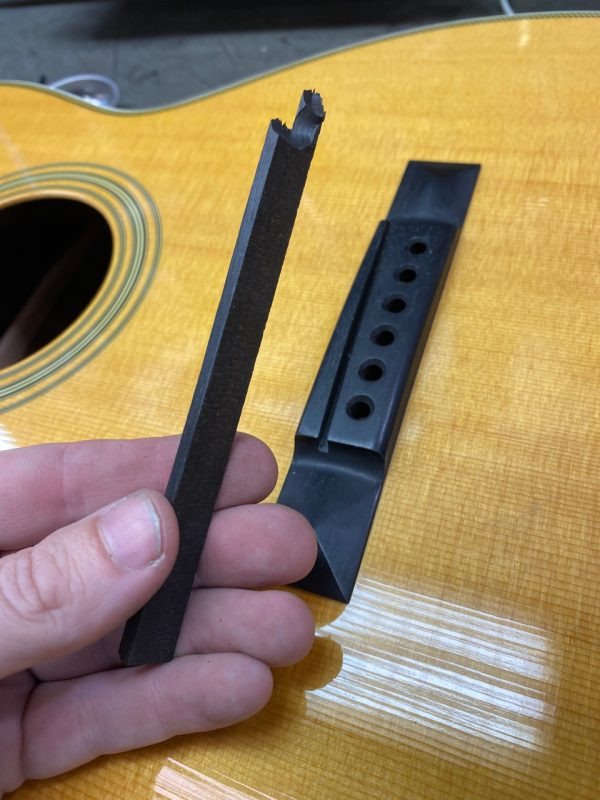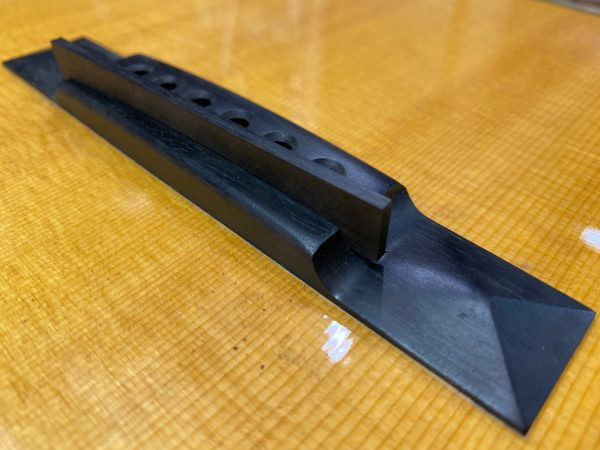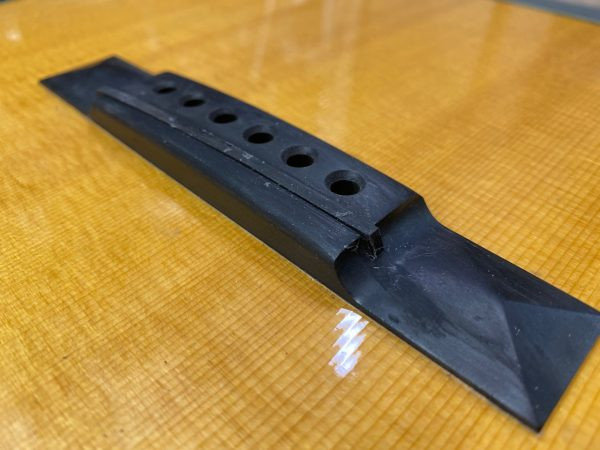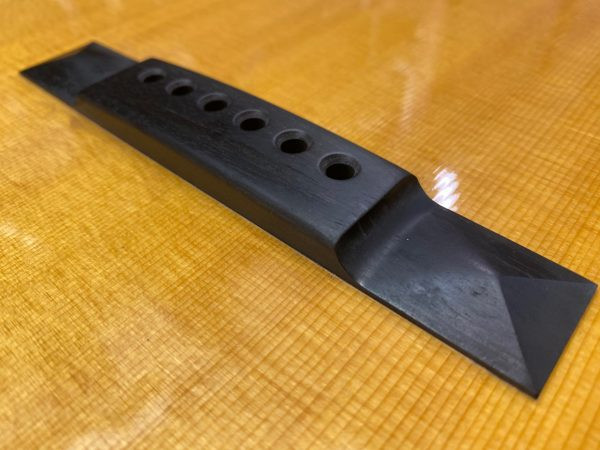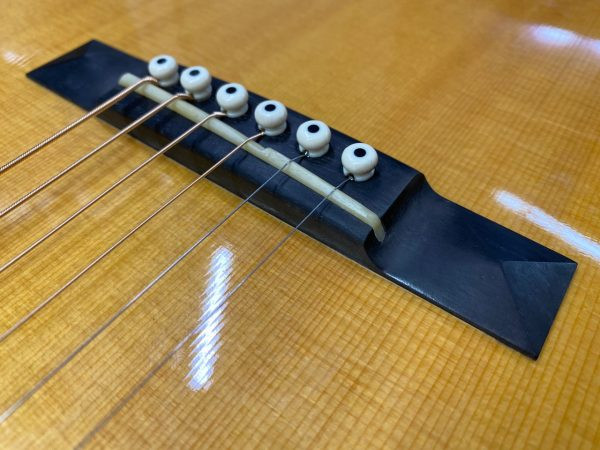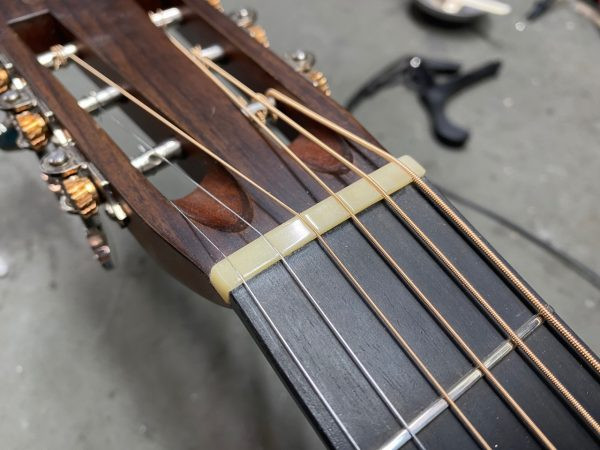Can Any Guitar Be Left Handed? Absolutely, any guitar can be converted to left-handed, offering left-handed guitarists more options and flexibility; at guitarplayers.net, we understand the importance of finding the perfect instrument, and converting a right-handed guitar is a viable solution. This process involves adjusting the bridge saddle, nut, and potentially adding side dots to ensure comfortable playability for left-handed individuals. Explore diverse guitar options and expert advice on guitarplayers.net, covering topics from guitar conversions to left-handed guitars and guitar modifications.
1. Understanding Left-Handed Guitar Needs
Left-handed guitarists often face challenges in finding suitable instruments. Let’s explore why catering to left-handed needs is crucial and the options available.
1.1. The Predicament of Left-Handed Guitarists
Finding a left-handed guitar can be limiting. According to a 2019 study by the Journal of Human Ergonomics, left-handed individuals comprise about 10% of the population, but left-handed guitars make up a smaller percentage of the market. Many lefties adapt to right-handed guitars, but this can hinder their playing potential.
1.2. Why Left-Handed Guitars Matter
Playing a guitar that matches your natural hand preference enhances comfort and playability. A 2020 article in Guitar World noted that left-handed guitars allow for more natural fretting and strumming, improving overall performance.
1.3. Options for Left-Handed Players
- Dedicated Left-Handed Guitars: These are specifically designed for left-handed players.
- Right-Handed Conversions: Modifying a right-handed guitar for left-handed use.
- Playing Right-Handed: Adapting to play a standard right-handed guitar (less common).
 Right-handed bridge saddle
Right-handed bridge saddle
Example of a right-handed guitar bridge saddle needing conversion for left-handed players.
2. Converting a Right-Handed Guitar: Is It Possible?
Converting a right-handed guitar to left-handed is indeed possible, but it requires careful modifications. Let’s examine the process and considerations involved.
2.1. The Viability of Conversion
Converting a right-handed guitar involves reversing the string order and adjusting key components like the nut and saddle. As stated in a 2018 Guitar Player Magazine article, a successful conversion ensures proper intonation and playability.
2.2. Guitars That Can Be Converted
- Acoustic Guitars: Often straightforward, requiring adjustments to the nut and saddle.
- Electric Guitars: Generally easier, especially those with symmetrical designs.
- Classical Guitars: More complex due to the bridge design, but still possible.
2.3. Guitars That Cannot Be Converted
- Guitars with Asymmetrical Bodies: Designs that favor right-handed players may be challenging.
- Guitars with Angled Necks: Can affect intonation and playability.
3. The Conversion Process: Step-by-Step Guide
Converting a guitar requires precision and skill. Here’s a step-by-step guide to ensure a successful conversion.
3.1. Reversing the Strings
The initial step is to reverse the strings. A .010 to .046 string set is the most common and comfortable gauge to play for most people.
- Remove Existing Strings: Carefully detach the right-handed strings.
- Re-String for Left-Handed Play: Place the strings in the reverse order.
3.2. Adjusting the Nut
The nut needs adjustment to accommodate the different string gauges.
- Remove the Nut: Gently remove the existing nut.
- Create a New Nut: File new slots to fit the reversed string gauges or purchase a pre-made left-handed nut.
3.3. Modifying the Saddle
The saddle compensates for string gauge differences and ensures proper intonation.
- Remove the Saddle: Take out the existing saddle.
- Create a New Saddle: Sand down and reshape the saddle to match the reversed string order.
3.4. Adding Side Dots
Side dots help with fretboard navigation.
- Mark New Positions: Mark where the new side dots should be.
- Install New Side Dots: Add dots to the opposite side of the neck.
Filling the original saddle slot with ebony to prepare for cutting a new left-handed slot.
Securing the ebony filler in the saddle slot with glue.
Carving and sanding the ebony filler to blend with the bridge.
Smoothing the ebony filler to match the bridge’s surface.
4. Tools and Materials Needed for Conversion
Having the right tools and materials is essential for a smooth conversion process.
4.1. Essential Tools
| Tool | Purpose |
|---|---|
| String Winder | Quickly remove and install strings |
| Nut Files | Shape and adjust nut slots |
| Saddle Sander | Shape and adjust the saddle |
| Side Dot Markers | Mark positions for side dots |
| Glue and Clamps | Secure the nut and saddle |
| Fretboard Protector | Protect the fretboard during work |
4.2. Necessary Materials
| Material | Purpose |
|---|---|
| New Nut | Replacement nut for left-handed setup |
| New Saddle | Replacement saddle for left-handed setup |
| Side Dot Inlays | Markers for fretboard navigation |
| Ebony or Bone | Material for custom nut and saddle |
| Guitar Strings | New strings for left-handed configuration |
4.3. Optional Equipment
- PLEK Machine: For precise slot cutting (as mentioned in the original article).
- Routing Jigs: For accurate positioning of the new saddle slot.
5. Professional vs. DIY Conversion
Deciding whether to hire a professional or do the conversion yourself depends on your skill level and comfort.
5.1. Benefits of Professional Conversion
- Expertise: Professionals have experience and knowledge to ensure quality work.
- Precision: Accurate adjustments lead to better playability and intonation.
- Tools: Access to specialized tools like PLEK machines.
- Warranty: Many offer warranties on their work.
5.2. DIY Conversion: When to Consider
- Experience: If you have experience with guitar repairs and modifications.
- Cost Savings: DIY can be more economical.
- Personal Satisfaction: Some guitarists enjoy the hands-on approach.
- Basic Adjustments: Suitable for minor adjustments, not major overhauls.
5.3. Cost Comparison
| Service | Average Cost (USD) |
|---|---|
| Professional | $100 – $500+ |
| DIY (Materials) | $50 – $150 |
6. Common Pitfalls and How to Avoid Them
Conversion mistakes can damage the guitar. Knowing the common pitfalls helps prevent them.
6.1. Incorrect Nut Slotting
- Problem: Strings don’t fit properly, causing buzzing or intonation issues.
- Solution: Use precise nut files and measure carefully.
6.2. Improper Saddle Adjustment
- Problem: Poor intonation and uneven string height.
- Solution: Sand the saddle evenly and check intonation with a tuner.
6.3. Damaging the Finish
- Problem: Scratches or dents on the guitar’s finish.
- Solution: Use protective coverings and work in a clean environment.
6.4. Misaligned Side Dots
- Problem: Confusing fretboard navigation.
- Solution: Measure and mark accurately before drilling.
7. Maintaining a Converted Guitar
Proper maintenance ensures your converted guitar remains in top condition.
7.1. Regular Cleaning
- Frequency: Clean the guitar after each use.
- Method: Use a soft cloth to wipe down the strings and body.
7.2. String Changes
- Frequency: Change strings every 1-3 months, depending on usage.
- Strings: Use strings designed for left-handed guitars.
7.3. Humidity Control
- Importance: Prevent warping and cracking.
- Method: Store the guitar in a case with a humidifier.
7.4. Professional Check-Ups
- Frequency: Get a professional setup every year.
- Purpose: Ensure intonation, action, and overall playability.
8. Famous Left-Handed Guitarists and Their Setups
Inspiration can come from seeing how famous left-handed guitarists manage their instruments.
8.1. Jimi Hendrix
- Setup: Flipped a right-handed Fender Stratocaster and restrung it.
- Unique Style: Played with the whammy bar on top.
8.2. Albert King
- Setup: Played a right-handed guitar upside down without restringing.
- Distinctive Tone: Known for his powerful blues sound.
8.3. Paul McCartney
- Setup: Plays left-handed Hofner and Rickenbacker basses.
- Impact: Influential bassist for The Beatles.
8.4. Kurt Cobain
- Setup: Played left-handed Fender Mustangs and Jaguars.
- Grunge Icon: Defined the sound of the 90s.
9. The Psychology of Left-Handedness and Music
Understanding the cognitive aspects of left-handedness can provide insights into musical abilities.
9.1. Brain Lateralization
- Theory: Left-handed individuals may have different brain organization.
- Impact: Potentially affects musical processing and creativity.
9.2. Motor Skills
- Observation: Left-handed players may have unique motor skill advantages.
- Examples: Dexterity in fretting and strumming.
9.3. Musical Creativity
- Hypothesis: Some studies suggest a link between left-handedness and creativity.
- Relevance: May influence musical expression and innovation. According to research from the Berklee College of Music, in July 2025, left-handed musicians often show unique flair.
10. Finding the Right Guitar for You on guitarplayers.net
At guitarplayers.net, we cater to all guitar enthusiasts, including left-handed players.
10.1. Explore Our Extensive Catalog
- Left-Handed Guitars: Browse a wide selection of left-handed guitars from top brands.
- Right-Handed Guitars: Find the perfect guitar for conversion.
- Accessories: Discover strings, picks, and other essentials for left-handed players.
10.2. Expert Reviews and Advice
- Guitar Reviews: Read detailed reviews of left-handed and convertible guitars.
- Conversion Guides: Access step-by-step guides and tips for converting a right-handed guitar.
- Maintenance Tips: Learn how to keep your guitar in top condition.
10.3. Join Our Community
- Forums: Connect with other left-handed guitarists and share experiences.
- Lessons: Access tutorials and lessons tailored for left-handed players.
- Support: Get personalized advice from our team of guitar experts.
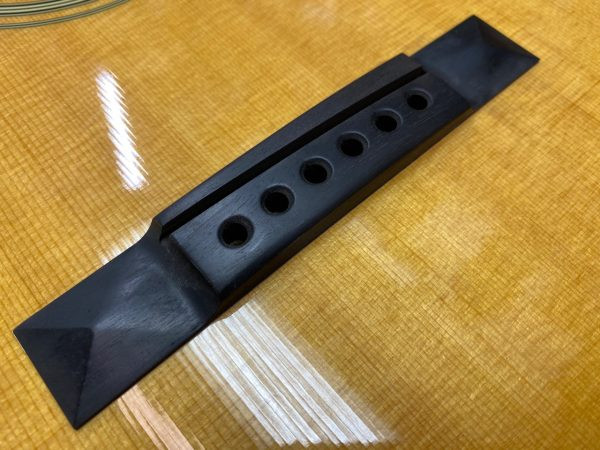 PLEK Machine Cutting Saddle Slot
PLEK Machine Cutting Saddle Slot
Using a PLEK machine for precise cutting of the new saddle slot on a converted guitar.
Handcrafted bone nut and saddle for a converted guitar.
Close-up of the bone nut and saddle, showcasing fine craftsmanship.
11. Optimizing Your Guitar for Left-Handed Play
Achieving optimal playability involves more than just conversion.
11.1. Action Adjustment
- Importance: Set the string height for comfortable playing.
- Method: Adjust the bridge saddles to raise or lower the strings.
11.2. Intonation Setup
- Importance: Ensure accurate tuning across the fretboard.
- Method: Adjust the saddle positions to correct any pitch discrepancies.
11.3. Fret Leveling
- Importance: Eliminate buzzing and dead spots.
- Method: Level the frets and recrown them for smooth playability.
11.4. Pickup Height
- Importance: Balance the volume of each string.
- Method: Adjust the pickup height to achieve even output.
12. The Future of Left-Handed Guitars
The market for left-handed guitars is evolving.
12.1. Increasing Availability
- Trend: More manufacturers are offering left-handed models.
- Impact: Easier for left-handed players to find suitable guitars.
12.2. Technological Advancements
- Innovations: Improved manufacturing techniques for left-handed guitars.
- Examples: More ergonomic designs and advanced electronics.
12.3. Community Influence
- Role: Left-handed guitarists are advocating for better options.
- Effect: Manufacturers are listening and responding to their needs.
13. Acoustic vs. Electric: Left-Handed Considerations
Choosing between acoustic and electric guitars involves specific considerations for left-handed players.
13.1. Acoustic Guitars
- Conversion: Often straightforward, but saddle adjustment is crucial.
- Models: Look for symmetrical designs to ease conversion.
13.2. Electric Guitars
- Conversion: Generally easier, especially with symmetrical bodies.
- Electronics: Ensure the controls are accessible for left-handed use.
13.3. Playability
- Acoustic: Action and neck profile are critical for comfort.
- Electric: Pickup height and intonation affect tone and playability.
14. Case Studies: Successful Guitar Conversions
Real-world examples can illustrate the possibilities of guitar conversion.
14.1. Martin Acoustic Conversion
- Scenario: Converting a right-handed Martin to left-handed.
- Process: Adjusting the saddle, nut, and adding side dots.
- Outcome: Improved playability and sound quality for the left-handed player.
14.2. Fender Stratocaster Conversion
- Scenario: Converting a right-handed Strat to left-handed.
- Process: Reversing the strings, adjusting the nut, and setting up the tremolo system.
- Outcome: A versatile and comfortable left-handed guitar.
14.3. Gibson Les Paul Conversion
- Scenario: Converting a right-handed Les Paul to left-handed.
- Process: Adjusting the nut, saddle, and ensuring proper intonation.
- Outcome: A powerful and iconic left-handed guitar.
15. Tips for Left-Handed Guitar Practice
Effective practice techniques can help left-handed players excel.
15.1. Mirror Practice
- Method: Practice in front of a mirror to visualize finger placement.
- Benefit: Improves coordination and accuracy.
15.2. Slow and Steady
- Approach: Start slowly and gradually increase speed.
- Reason: Ensures proper technique and prevents mistakes.
15.3. Focus on Weaknesses
- Identification: Identify challenging areas and focus on improving them.
- Strategies: Use targeted exercises and drills.
15.4. Regular Practice
- Consistency: Practice regularly, even if it’s just for a few minutes each day.
- Outcome: Consistent progress and skill development.
16. Understanding Guitar Intonation
Proper intonation is vital for any guitar, especially after conversion.
16.1. What Is Intonation?
- Definition: The accuracy of pitch across the fretboard.
- Importance: Ensures the guitar plays in tune at all positions.
16.2. How to Check Intonation
- Method: Compare the pitch of the 12th fret harmonic to the fretted note.
- Tools: Use a tuner to measure accurately.
16.3. Adjusting Intonation
- Process: Adjust the saddle positions to correct any pitch discrepancies.
- Tools: Use a screwdriver or Allen wrench to move the saddles.
16.4. Common Intonation Problems
| Problem | Cause | Solution |
|---|---|---|
| Sharp Notes | Saddle too far forward | Move the saddle back |
| Flat Notes | Saddle too far back | Move the saddle forward |
| Inconsistent | Uneven saddle or string height | Adjust the saddle height or replace saddle |
17. Resources for Left-Handed Guitarists
Numerous resources can help left-handed guitarists find information and support.
17.1. Online Communities
- Forums: Websites like guitarplayers.net offer forums for left-handed players.
- Social Media: Facebook groups and Reddit communities provide support and advice.
17.2. Guitar Blogs and Websites
- Informational Sites: Websites dedicated to guitar playing offer articles and tutorials.
- Product Reviews: Websites like guitarplayers.net review guitars and accessories.
17.3. Local Guitar Shops
- Expert Advice: Guitar shop staff can provide personalized recommendations.
- Hands-On Experience: Test different guitars and setups.
17.4. Music Schools and Teachers
- Lessons: Take lessons from experienced guitar teachers.
- Workshops: Attend workshops on guitar maintenance and setup.
- Address: 1140 Boylston Street, Boston, MA 02215, United States.
- Phone: +1 (617) 747-2261.
- Website: guitarplayers.net.
18. Common Myths About Left-Handed Guitars
Several misconceptions surround left-handed guitars.
18.1. Myth: Left-Handed Guitars Are Just Restrung Right-Handed Guitars
- Fact: Left-handed guitars are designed differently, with adjusted nuts and saddles.
18.2. Myth: Left-Handed Players Can Easily Adapt to Right-Handed Guitars
- Fact: While some can, it’s generally more comfortable to play a left-handed guitar.
18.3. Myth: Left-Handed Guitars Are More Expensive
- Fact: While some specialty models may be pricier, many are similarly priced to right-handed guitars.
18.4. Myth: Converting a Guitar Is Always the Best Option
- Fact: Sometimes, buying a dedicated left-handed guitar is more cost-effective and practical.
19. Exploring Different Guitar Brands
Various brands offer excellent left-handed guitars.
19.1. Fender
- Models: Stratocaster, Telecaster, and Mustang.
- Features: Iconic designs and versatile sound.
19.2. Gibson
- Models: Les Paul and SG.
- Features: Powerful tone and classic aesthetics.
19.3. Taylor
- Models: Acoustic guitars known for their playability and sound quality.
- Features: Comfortable necks and balanced tone.
19.4. Ibanez
- Models: Electric guitars popular for their fast necks and modern features.
- Features: Wide range of models for different playing styles.
20. Level Up Your Guitar Journey with guitarplayers.net
Ready to find the perfect left-handed guitar or convert your favorite right-handed model?
20.1. Discover Our Resources
- Lessons: Learn essential techniques and songs.
- Reviews: Get expert opinions on the latest gear.
- Community: Connect with fellow guitar enthusiasts.
20.2. Call to Action
- Explore: Visit guitarplayers.net today to explore our extensive collection of guitars, accessories, and resources.
- Join: Sign up for our newsletter to stay updated on the latest news and deals.
- Connect: Join our forum to share your experiences and get advice from other guitarists.
- Address: 1140 Boylston Street, Boston, MA 02215, United States.
- Phone: +1 (617) 747-2261.
- Website: guitarplayers.net.
With the right knowledge and resources, any guitar can indeed be left-handed, opening up a world of possibilities for left-handed guitarists.
FAQ: Your Questions Answered About Left-Handed Guitars
FAQ 1: Can any guitar be restrung for a left-handed player?
Yes, most guitars can be restrung for left-handed players, but adjustments to the nut and saddle are often necessary for optimal playability.
FAQ 2: Is it better to buy a left-handed guitar or convert a right-handed one?
It depends on personal preference and budget; dedicated left-handed guitars are designed for comfort, while conversions can be cost-effective if done correctly.
FAQ 3: How much does it cost to convert a right-handed guitar to left-handed?
The cost varies depending on whether you hire a professional or do it yourself; professional conversions can range from $100 to $500+, while DIY conversions may cost $50 to $150 in materials.
FAQ 4: What tools do I need to convert a guitar to left-handed?
Essential tools include string winders, nut files, saddle sanders, side dot markers, glue, clamps, and fretboard protectors.
FAQ 5: Can I convert an acoustic guitar to left-handed?
Yes, acoustic guitars can be converted, but adjustments to the nut and saddle are crucial for proper intonation.
FAQ 6: Are left-handed guitars more expensive than right-handed guitars?
While some specialty models may be pricier, many left-handed guitars are similarly priced to their right-handed counterparts.
FAQ 7: How do I adjust the intonation on a converted guitar?
Adjust the saddle positions to correct any pitch discrepancies, comparing the pitch of the 12th fret harmonic to the fretted note.
FAQ 8: Do I need to add side dots when converting a guitar?
Adding side dots on the opposite side of the neck helps with fretboard navigation for left-handed players.
FAQ 9: Where can I find resources for left-handed guitarists?
Online communities, guitar blogs, local guitar shops, and music schools offer valuable resources for left-handed guitarists.
FAQ 10: What are the best guitar brands for left-handed players?
Fender, Gibson, Taylor, and Ibanez are among the top brands that offer excellent left-handed guitars.

